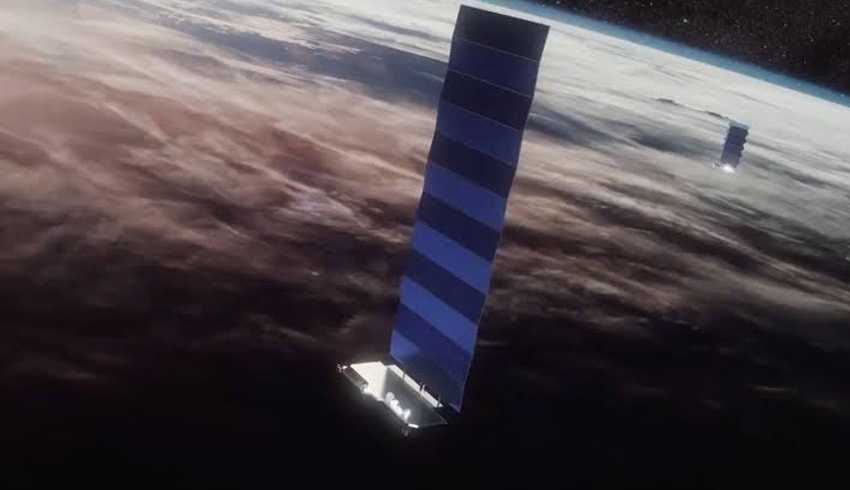This fifth launch takes the Starlink constellation to 302 satellites.
SpaceX founder and chief executive Elon Musk said last year Starlink would be economically viable with 1,000 satellites, with additional satellites to meet customer demand.
His ultimate vision is a constellation of as many as 12,000 satellites, providing a global high-speed broadband service.
In the latest launch, the SpaceX Falcon 9 rocket blasted off from Cape Canaveral on Monday with a different mission profile.
Rather than the circular orbit of earlier launches, this mission released the 60 satellites at the lower end of an elliptical orbit around 15 minutes after launch, avoiding the need to fire the rocket upper stage a second time.
That’s 70 kilometres lower than the start orbit for earlier launches.
From this lower orbit, the satellites will use their onboard electric propulsion to boost to their planned 550-kilometre orbit.
Narrating the launch, SpaceX lead engineer Jessie Anderson said future launches would use this lower drop off point to shorten the mission and ease the load on the rocket.
SpaceX has made a big deal of recovering and reusing its rocket first stages, reducing costs and mission turnaround time.
Alas this time, the first stage missed the recovery drone ship out in the Atlantic, splashing down nearby.
This was that first stage’s fourth mission. Previously it had been used on two NASA resupply missions to the International Space Station last year and for the launch of the JCSAT-18/Kacific-1 communications satellite in December.
Using this fourth stage for the latest launch marked the fastest turnaround of a mission so far.
Had the recovery worked, this would have marked SpaceX’s 50th booster recovery.
As it turned out, the stage made a relatively soft landing on the ocean and was recovered. It might still be reusable.
"The first stage made its way back to Earth. Unfortunately, we did not land the first stage on our drone ship," Anderson said.
"But it did make a soft landing on the water, right next to the drone ship, so it does look like it might be in one piece. "

